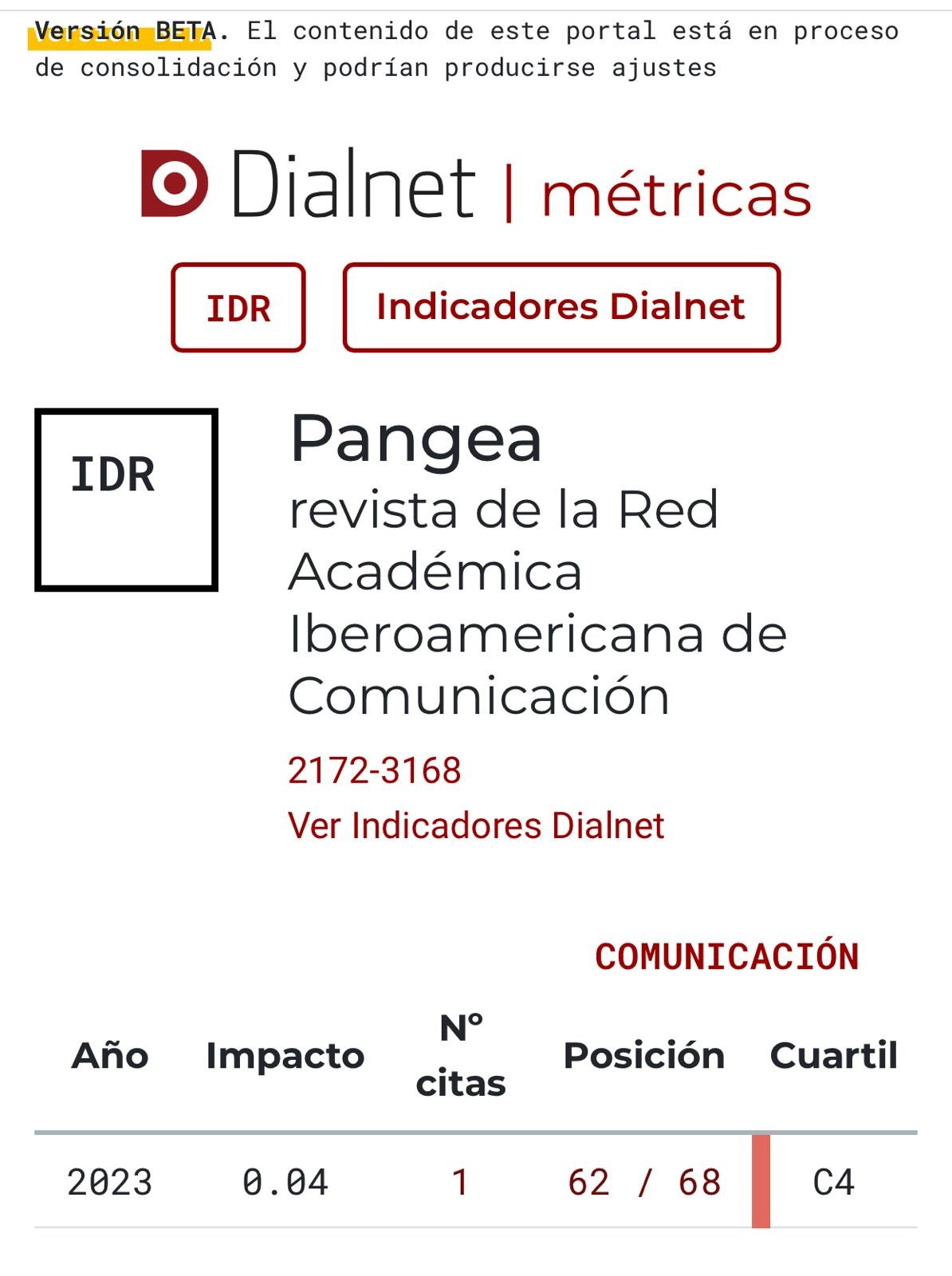Gastronomy as an entertainment product. Analysis of restaurants and successful cooking television shows in Spain from a creative perspective
DOI:
https://doi.org/10.52203/pangea.v5i1.93Keywords:
Branding, Communication, Cooking show, Culture, Gastronomy, Creative IndustriesAbstract
Gastronomy is very present in today's creative economy. Both television and the main food critic guides are approaching the food culture to a large number of audiences, thanks to creative strategies involving linked products to creative environment. Thus, cooking is increasingly occupying a prominent place as a sociocultural and economic element. This article attempts to explore the link between gastronomy, considered as a phenomenon with a high cultural influence, and the Creative Industries, a dynamic sector whose business models use creativity and intellectual capital to create products and services with a symbolic added value. It therefore aims to analyze the current situation of gastronomy and the non-stop approach to social entertainment through the study of multiple gastronomic creative activities, based on television programmes and successful restaurants in Spain and identifying the type and purpose of all of them. With this aim, an analysis of studies of both gastronomy programmes as cooking show format and some 3 Michelin star restaurants in Spain is carried out. All this, in order to establish the evolution of gastronomy as a model of Creative Industry.
References
British Council (2010). Mapping the Creative Industries: A Toolkit. Recuperado de http://www.britishcouncil.org/mapping_the_creative_industries_a_toolkit_2-2.pdf
Boix, R. y Lazzeretti, L. (2011). Las industrias creativas en España: una panorámica. Investigaciones Regionales. 22 – Páginas 181 a 206 Sección Panorama y Debates
Dossier de prensa Guía Michelin. España y Portugal (2014). Recuperado de www.michelin.es/content/pdf/guia_michelin_v2.pdf
Garnham, N. (2005). From cultural to creative industries. An analysis of the implications of the “creative industries” approach to arts and media policy making in the United Kingdom. International Journal of Cultural Policy, Vol. 11, No. 1
Hidalgo-Marí, T. y Segarra-Saavedra, J. (2014). Televisión y gastronomía. Análisis histórico de la programación televisiva desde una perspectiva publicitaria. Pensar la Publicidad. Revista Internacional de Investigaciones Publicitarias, 7(2). [Artículo aceptado pendiente de publicación en el próximo número].
Ketchum, C. (2005): The Essence of Cooking Shows: How the Food Network Constructs Consumer Fantasies. Journal of Communication Inquiry, 29, pp. 217-234.
Morcillo, P. y Alcahud López, M. C. (2005). Creatividad que estás en los cielos… Revista de Investigación en Gestión de la Innovación y Tecnología. Fomento de la Innovación Tecnológica. Número 30.
Olivares F. (2012). Rebelión en las marcas. Madrid: LID Editorial Empresarial. Pérez, C. C. y Salinas, G. (2008). Valoración y evaluación de marcas. Ediciones Deusto.
Pérez C.C. y Salinas G. (2008). Valoración y evaluación demarcas. Deusto: Ediciones Deusto.
Rodríguez-Monteagudo, E. e Hidalgo-Marí, T. (2013). Radiografía de la Universidad de Alicante a través de las noticias emitidas en el Diario Información. Revista Mediterránea de Comunicación, vol. 4(1), pp145-167. Recuperado de http://www.mediterranea-comunicacion.org/Mediterranea/article/view/47/136
Rodríguez, R.; Tur, V. y Olivares, F. (2010). Industrias creativas: novedades, objeciones y perspectivas. Actas II Congreso Internacional Latina de Comunicación Social. Universidad de la Laguna, Diciembre. Recuperado de http://www.revistalatinacs.org/10SLCS/actas_2010/37Raul.pdf
UNCTAD (2010). Economía Creativa Informe 2010. Recuperado de http://unctad.org/es/Docs/ditctab20103_sp.pdf
UE (2010). Libro Verde: Liberar el potencial de las Industrias Culturales y Creativas. COM (2010)183 final (Bruselas, 27-4-2010).
UNESCO (2006). Comprender las industrias creativas. Las estadísticas como apoyo a las políticas públicas. Recuperado de http://portal.unesco.org/culture/en/files/30850/11467401723cultural_stat_es.pdf/cultural_stat_es.pdf
William Reed Business Media (2014). The World´s 50 Best Restaurants. Recuperado de http://shop.william-reed.com/store/products,worlds-50-best-restaurants-guide_2552.htm
Downloads
Published
Issue
Section
License
Copyright (c) 2014 Eliseo Rodríguez-Monteagudo, Tatiana Hidalgo_Marí, Jesús Segarra-Saavedra

This work is licensed under a Creative Commons Attribution-NonCommercial-NoDerivatives 4.0 International License.
https://creativecommons.org/licenses/by-nc-nd/4.0/deed.es





